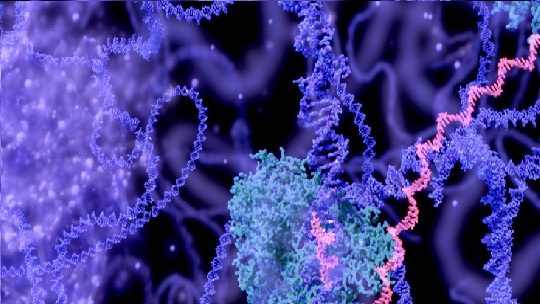
Research and Development (R&D) initiatives in genetic engineering sector during last two decades have led to the emergence of a new generation gene editing (GE) technology, “Clustered Regularly Interspaced Short Palindromic Repeats (CRISPR) along with nucleases”.
CRISPR is a natural defense system unique to bacteria and archaea that aids in resisting invasion of viruses or exogenous plasmids.
CRISPR-Cas systems can be classified into 2 classes (Class 1 and Class 2), 6 types (I to VI) and several subtypes, with multi-Cas protein effector complexes in Class 1 systems (Type I, III, and IV) and a single effector protein in Class 2 systems (Type II, V, and VI).
The CRISPR system consists of two critical modules, including gRNA (comprised of CRISPR RNA (crRNA) and a constant trans-activating crRNA (tracrRNA)) and single DNA endonuclease, Cas9.
The emergence of CRISPR/Cas gene editing technology provides new possibilities for human gene editing. With rapid development in recent years, it has been widely applied in many fields, especially in the fields of genetic disease treatment, disease-related gene screening and detection, tumor treatment, transformation of plants and animals, and prevention and control of pathogenic microorganisms, which have great potential and can effectively improve the quality of life of humans.
- Introduction to CRISPR-Cas systems
- Introduction
- CRISPR-Cas systems technology
- CRISPR-Cas systems types
- Competitors & comparison
- International project about
- Country policy about
- Market
- Introduction to technology analysis
2-1. Patent & articles documents properties
2-2. Importance of documents information analysis
2-3. Search tool (patent & article search database)
2-4. Determining specialized and comprehensive keywords
2-5. Extraction of standard patent classification codes
2-6. International Patent Classification
2-7. Main stages of technology analysis process
- Technology analysis
3-1- Introduction
3-2- Analysis of patent publication trend
3-3- Geographical analysis of patent
3-4- Analysis of of active players
3-5- key players by time
3-6- Cooperation of players
3-7- Top researchers
3-8- Top key concepts
3-9- Top CPC codes in technology
3-10-Technology related fields
3-11-Technology life cycle
3-12. Review of technology research status in technology
3-14. Timing of document publish
3-15.Top researchers
3-16.Top countries in research
3-17.Top countries research trend
3-18.Top research centers in the technology
3-19.Top research centers trend
3-20.Top academic research teams & their scope
- Text mining for the documents
4-1. The key concepts
4-3. Top technical patents
4-3. Top patents technical analysis
4-4. Text mining of patents for technical purpose (Customised)
4-5. Text mining of articles for technical purpose (Customised)
4-6.Top commercial patents for selected domains or subsectors
- Commercial status of technology
5-1. Identify companies with a product / technology
5-2. Technical information of commercialized products
5-3. Identify supported research projects and case studies
5-4. Review the necessary rules, standards and licenses for a products (Customized)
5-5. Preparation of a product technical identification (Customized)
5-6. Product History (Customized)
5-7. Different product / technology applications (Customized)
5-8. Conventional and modern methods of product / technology production (Customized)
5-9. Challenges and prospects of technology commercialization
- Drawing technology tree
6-1. Review articles
6-2. Review patents
6-3. Drawing a technology tree according to the documents information
- Results, Challenges and Suggestions
7-1. Results
7-2.Challenges and suggestions
Resources






